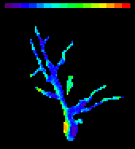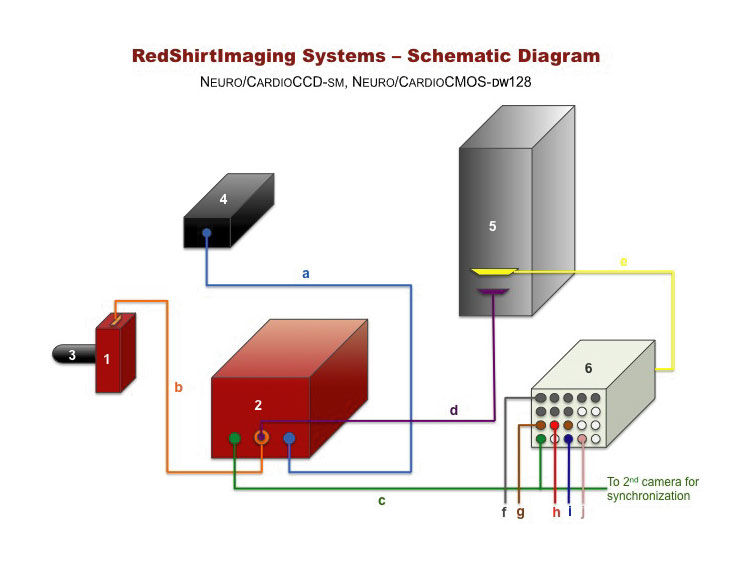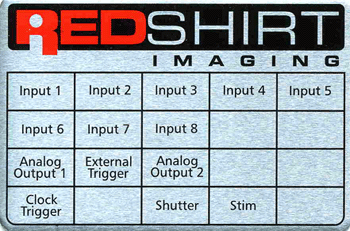|
|
|
Components:
Connections: a - Power supply to camera controller. b - Cable connecting the camera head and the controller. c - Clock trigger line from the control panel to camera controller. ** d - Camera controller to EDT board. e - Cable connecting Microstar A-to-D/D-to-A board to the control panel. f - 8 BNC inputs. g - Analog outputs (See Software Manual). h - External Trigger. i - TTL output that controls the shutter during data acquisition. j - TTL output that triggers stimulator at the beginning of acquisition. ** If you have two cameras and are only running one, turn the 2nd camera on or disconnect it from this line.
This unit is the
external connection to the A-to-D board (DAP840) and thus has the
capacity of sending out TTL and other analog signals as well as
accepting incoming signals.
Inputs 1-8 : These 8 BNCs are intended for input of electrical data (Voltage, Current etc..) to be recorded in synchrony with the optical data. Connect the output from your amplifier(s) to any of those inputs. The inputs are digitized at 12 bit accuracy.
Clock Trigger: The output from this BNC is a trigger to the camera for each frame acquired. This trigger is essential to the data acquisition and should be connected to the camera controller. (see diagram ).
Shutter: Connect this BNC to the "Pulse Input" BNC on your Shutter Control Box and set the later to "remote control" (Names relate to the Uniblitz shutter control and might vary). The data acquisition module of NeuroPlex controls the shutter via this output.
Stim: Connect this BNC to the "External trigger" of your stimulator. Any delay desired between the start of recording and the stimulus should then be set on your stimulator.
Analog Outputs (1 & 2) : Any signal sent by the NeuroPlex data acquisition function "Analog Output", will be output through this BNC. Thus - in order to send a voltage command or a waveform - this BNC should be connected to the appropriate external input on your amplifier.
External Trigger: The purpose of this BNC is to synchronize the data taking with an external event (e.g. heartbeat, sniffing, EKG). When using the "external mode" (see software manual), after the "Start" button has been pushed, the program looks for an input voltage (2.5V or more) at this BNC to trigger the acquisition. The width of a repetitive triggering pulse should be shorter than the acceptable jitter in the relationship between the recorded event and the trigger. If the trigger signal is long (e.g. a duty cycle of 50%) different trials will be triggered at different phases of the cycle.
|
|||||||||||||||||||||||||||||||||||||||||||||||||||||||||||||||||||||||||||||||||||||||||||||||||||||||||||||||||||||||||||||||||||||||||||||||||||||||||||||||||||||||||||||||||||||||||||||||||||||||||||||||||||||||||||||||||||||||||||||||||||||||||||||||||||||||||||||||||||||||||||||||||||||||||||||||||||||||||||||||||||||||||||||||




